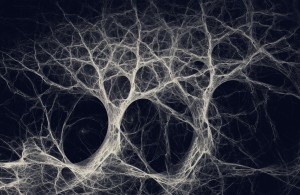As it has been discussed through the last three decade’s avant-garde debates, there has been an increasing number of networks that we humans – and in a larger scale all the universe – are engaged with them, and engaged with the other parts of the universe by means of these networks.
Definitely, the number of networks that we may face everyday is increasingly faster that we suppose, But the point is how it happens? And Why? Is there any sample that could help us to predict the next steps of these fast transitions? Are most of us aware of what is taking place to us by means of these nets? To what extent?
Steven Johnson has done some researches on a couple of almost the most impressive networks that could affect our life, such as brains, ants, cities and software emergence in order to figure out some relations between these nets, and also, the essence of these networks, that could be generalized to the others as well. As it could be find out of these research, the keyword to understand the quantitive and qualitative behavior of these nets, is “Emergence”:
“Emergence seems for me to be the intelligence of a cluster, developed by ‘dumb’ members (agents), but without a pacemaker. Emergence is a bottom-up approach of explaining smart behavior, where single agents team up and build a big and smart whole. Even if no agent is aware of the major plan.”
So there is a kind of intelligence inside these networks,like nature, that give them the ability to affects themselves and the world out of their unreal boundaries, and we humans, are not so conscious of these potentials and opportunities, that may play the leading role of our social life.
The cities, and the buildings of course, are in a vital part of the whole network of the universe, and they have such kind of internal intelligence or emergence, that shapes the surrounding environment and the future of what it is now. As a case study, when you look at to Sendai Mediatheque done by Toyo Ito, you could find out a system that has been stablished, and also a handful of networks that seems quite flexible to be merged with each other, or better to say, help each other to perform in a collaborative way. Structural elements, social interactions, circulation facilities, and the other subsystems in Sendai Mediatheque perform in an absolutely engaging way, so that you can hardly find any subsystem that acts against this kind of interactive unity.
After all, there are some unclear parts that must have been fulfilled during my further researches, or to be more realistic, it may just be an starting point in order to figure out how to go on during next steps. Believe it or not, we are part of a super amazing networks that helps us to imitate it in almost any aspect : “Nature”. And again, believe it or not, we are shaping a vast kind of networks in the age of computer. One of the most significant unclear points that comes to mind is that How can we make connections between these two huge networks? Which are the exact parameters that have been exported from nature that can help us to shape the next generations of the computer-based networks? When is the moment that human kind may be proud of making and completing a highly similar to nature large-scale network?

